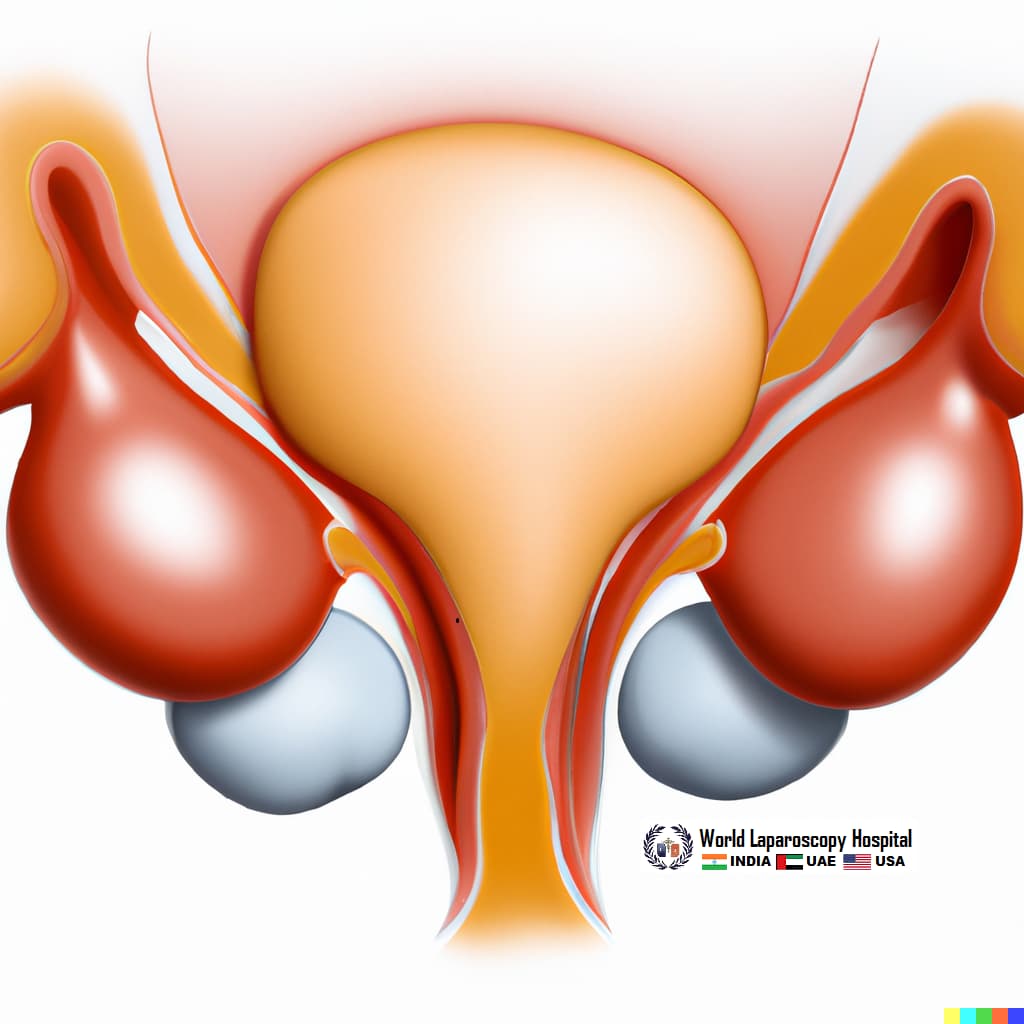The extraperitoneal approach means that the surgery is performed outside of the abdominal cavity, reducing the risk of injury to abdominal organs. The Burch technique specifically involves using sutures to support the bladder and urethra, rather than using mesh or other materials.

Laparoscopic extraperitoneal Burch suspension is considered a minimally invasive procedure and is associated with less pain and shorter recovery time compared to traditional open surgery. However, as with any surgery, there are potential risks and complications, such as bleeding, infection, and bladder or bowel injury. The procedure may not be suitable for all women, and the decision to undergo surgery should be made in consultation with a qualified healthcare provider.
Cure rates for extraperitoneal colposuspension were similar to those reported for traditional laparoscopic or laparotomy Burch procedures; however, this is a more direct method to expose the space of Retzius, thus eliminating the need to open and close peritoneum.
Performing a laparoscopic extraperitoneal Burch suspension typically involves the following steps:
Anesthesia: The patient is placed under general anesthesia to ensure they are comfortable and do not feel any pain during the procedure.
Incision: The surgeon makes small incisions in the lower abdomen to allow access for the laparoscope and other surgical instruments.
Placement of laparoscope: The laparoscope is inserted through one of the incisions to provide visualization of the bladder and urethra.
Bladder dissection: The bladder is carefully dissected to identify the bladder neck and urethra.
Suture placement: The surgeon places sutures through the tissue surrounding the bladder neck and urethra to create a hammock-like structure to support them.
Knot tying: The sutures are tied to secure the hammock and provide support to the bladder and urethra.
Closure: The incisions are closed with stitches or surgical glue, and a bandage may be applied.
Recovery: The patient is closely monitored in the recovery room to ensure there are no immediate complications, such as bleeding or infection. They may be able to go home the same day or may need to stay in the hospital for a short period of time.
It's important to note that specific techniques may vary depending on the surgeon and the patient's individual needs. Recovery time can vary, but most patients can resume normal activities within a few weeks after the surgery. The surgeon will provide detailed instructions for post-operative care and follow-up appointments.
While laparoscopic extraperitoneal Burch suspension is a minimally invasive surgical procedure that is generally safe, there are still potential risks and complications that patients should be aware of. Some of the possible complications that can arise from this procedure include:
Bleeding: There is a risk of bleeding during or after the surgery, which may require additional treatment or a blood transfusion.
Infection: Any surgical procedure carries a risk of infection, which can cause fever, pain, and swelling. Antibiotics may be prescribed to prevent or treat infection.
Urinary tract injury: During the surgery, the bladder, ureters, or other parts of the urinary tract can be accidentally injured, which may require additional surgery to repair.
Bladder or bowel dysfunction: In rare cases, the surgery may cause bladder or bowel dysfunction, leading to difficulty urinating or passing stool.
Pain: Patients may experience pain or discomfort in the pelvic region, abdomen, or incision sites.
Recurrence of incontinence: While the surgery aims to treat stress urinary incontinence, it is possible for the symptoms to return in some patients.
Anesthesia complications: As with any surgical procedure, there is a risk of complications related to the use of anesthesia.
It is important to discuss any concerns or questions about potential complications with a healthcare provider before undergoing the procedure. Following post-operative instructions and attending follow-up appointments can help to minimize the risk of complications and ensure a smooth recovery.
After a laparoscopic extraperitoneal Burch suspension procedure, it is important for the patient to follow post-operative instructions to ensure proper healing and minimize the risk of complications. Some of the recommended care measures that patients may be advised to follow include:
Pain management: The patient may experience some discomfort or pain after the surgery, which can be managed with pain medications as prescribed by their healthcare provider.
Activity restrictions: Patients should avoid strenuous activities, heavy lifting, and sexual activity for several weeks following the surgery. Walking and light activities can be gradually resumed as recommended by the healthcare provider.
Incision care: The incisions may be covered with bandages or surgical glue, and patients should avoid getting them wet for a few days. The healthcare provider may recommend cleaning the incisions with mild soap and water and applying an antibiotic ointment.
Hygiene: Patients should maintain good hygiene by taking regular showers or baths, avoiding tub baths for a few weeks, and changing any dressings or bandages as instructed.
Diet: The patient may be advised to follow a light diet and avoid foods that may cause constipation or bowel discomfort.
Follow-up appointments: The healthcare provider may schedule follow-up appointments to monitor the patient's recovery and check for any complications.
Rest and recovery: Patients should allow themselves enough time to rest and recover from the surgery, and avoid returning to work or other activities too soon.
It is important to follow all post-operative instructions provided by the healthcare provider to ensure a smooth and successful recovery. If the patient experiences any unusual symptoms or complications, they should contact their healthcare provider immediately.